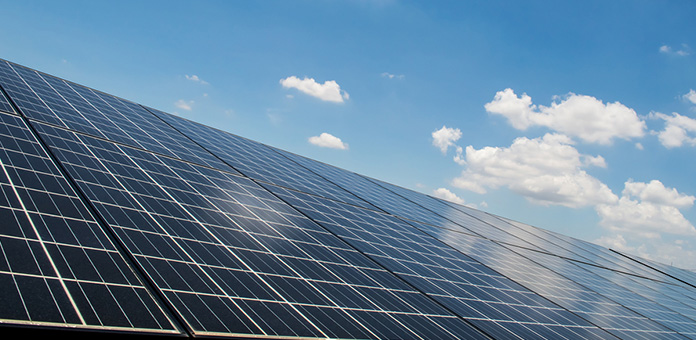
Silver is once again proving itself to be one of nature’s miracle makers. The entire industry of photography was based on the near-magical transformation of light into permanent images on film thanks to silver and its unique properties. Yet, even as digital photography has entered the scene, it seems as if it is only to allow a new role for silver in numerous technologies. Instead of merely creating images, silver is now an indispensable player in the role of powering the world with light and electricity. 1
Solar Power & Silver Demand

While society and industry are increasingly dependent on greater and greater levels of energy, the continued reliance on fossil fuels comes with a major price in many forms. On the other hand, the use of photovoltaic energy comes without those costs, and it gains its capabilities from the ability of silver to convert normal light into immense quantities of increasingly inexpensive electricity.
This rapidly growing field increased its demand for silver in 2016 by 43 percent and will hit full momentum in 2018. As the cost per gigawatt of electricity from photovoltaics continues to drop and legislation against fossil fuel increases, it is projected the use of photovoltaics in silver arrays in 2018 will surpass the record 2015 numbers by 75 percent. This means hundreds of millions of ounces of the precious metal will be needed to power this critical global movement to renewable energy. Many analysts believe the forecast for more demand is not yet fully priced into the silver market. 2
How Solar Works
The power of the sun’s energy has been understood for centuries, and the photovoltaic effect was first observed in 1839. However, it was the space race 3 that provided sufficient breakthroughs to make the technology commercially viable. 4 Today, there are many different varieties of solar cells, but they all share a precious element: the use of silver’s unmatchable conductivity.
There is now a veritable energy race to develop new types of solar cells and conversion techniques, and they center on silver. The basic concept of the solar cell is the same across these applications:
- A semiconductor wafer (normally silicon) is treated with a compound including silver to create an electric field with a positive and negative side.
- When sunlight strikes this coated wafer electrons are knocked loose.
- Attached electrical conductors collect those electrons to create an electrical circuit
- As multiple circuits are attached, substantial amounts of DC electricity are created for conversion, distribution, and use as AC power. 5
Silver’s Expanding Role in Renewable Energy
While new technologies strive to lower the content of silver needed for each solar cell, the massive increase in production still creates a tremendous demand. Thanks to silver’s position as the metal that has the highest electrical and thermal conductivity, as well as reflectivity, it is without peer in solar applications.
The technologies that are taking silver applications to the next level extend the role of the metal in the energy business. In fact, some analysts indicate the silver demand in the new world of renewable energy may well exceed anything yet forecast. 6
